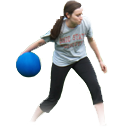
Overtraining: When Pushing Hard is Harmful
With so much emphasis placed on increasing physical activity, we hear very little about overtraining. For competitive athletes and some recreational athletes, however, overtraining can be a serious problem.
The definition of overtraining is personal. It is the point at which an athlete is training so hard and for so many hours that recovery does not occur with usual periods of rest. Athletic performance demands a balance of extreme effort and recovery. The athlete must expend a tremendous amount of energy on some days and also determine an adequate, but not excessive, number of days off, to be spent either resting completely or exercising with less intensity.
Many recreational and competitive athletes tend to think that more exercise and effort is always better. Even if they are aware of the facts, the tendency is to want to exert themselves a little longer and little harder during the next workout.
Symptoms of overtraining
Fatigue is one of the earliest symptoms of overtraining. Some experts call the earliest symptoms, those that resolve quickly if you just decrease the workout intensity on every third or fourth day, overreaching rather than overtraining.If you continue overreaching without recovery, you may experience some of these symptoms of overtraining:
• Tension
• Irritability
• Decreased appetite
• Restless sleep
• Loss of sexual desire
• More aches and pains
• Declining athletic performance
In the more severe form of the overtraining syndrome, the following can occur:
• Depression
• Menstrual irregularities in women
• More significant sleep problems
• Prolonged muscle soreness
• Markedly diminished athletic performance
Prevention and treatment
The best way to prevent overtraining syndrome is to pay attention and respond appropriately to the earliest symptoms. When exercise produces feelings of fatigue, rather than a sense of increased energy, don’t try to overcome this by exercising harder. Instead, you should intersperse days of light exercise or complete rest as part of your weekly routine.
This is especially true if you are ramping up the duration and intensity of workouts simultaneously. Continually increasing the amount and intensity of exercise at the same time results in the greatest chance of overtraining and “burnout.” Eating a balanced diet and getting adequate sleep are two other key elements that will help prevent overtraining syndrome. Nutritional supplements such as extra vitamins and amino acids do not aid performance. Some female athletes need to take an iron tablet to maintain a normal red blood cell count.
Alteration in mood can be either a contributing cause or an effect of overtraining. Symptoms of depression and anxiety need to be addressed and treated, including use of medications when necessary. Once symptoms progress to a full blown overtraining syndrome, then a more extended period of rest is required. Athletes should restart training while adhering to defined periods of rest and recovery.
Bottom line
Everyone knows that achieving high levels of fitness and superior athletic performance requires pushing yourself physically. However, it is this extreme exertion that breaks down muscles, uses lots of energy and makes you weak. It is the rest and recovery periods that allow you to get stronger. In general, intense endurance training sessions should be limited to no more than three days in a row, and for resistance training the intervals of muscle rest are usually every other day.
By Howard LeWine, M.D., Harvard Health Publications
Harvard Copyright © 2009 by the Presidents and Fellows of Harvard College. Used with permission of StayWell. All rights reserved. Harvard Medical School does not approve or endorse any products on the page. Harvard is the sole creator of its editorial content, and advertisers are not allowed to influence the language or images Harvard uses.




